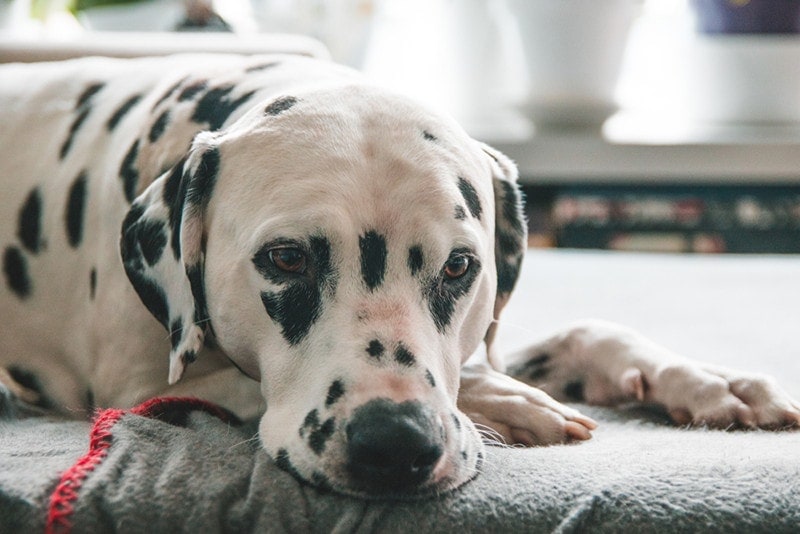Relating to caring for our beloved canines, offering one of the best vitamin is without doubt one of the most necessary methods we will guarantee their well being. That’s why we have to be cautious when choosing applicable meals for our furry mates.
Buckwheat, a grain-like seed, has grow to be extraordinarily standard as an addition to the human food regimen, however is that this seed appropriate for canines? Canine mustn’t eat buckwheat, as there’s a potential threat of toxicity.
Learn on for extra data on buckwheat, together with what it’s and the way it impacts canine.
What Is Buckwheat?
Buckwheat is a flowering plant that produces grain-like seeds. Regardless of its identify, buckwheat has nothing to do with precise wheat, that means this plant is completely gluten free, which is without doubt one of the causes for its growing reputation amongst people. One other is that buckwheat is wealthy in antioxidants, that are extraordinarily helpful for shielding cells in opposition to oxidative harm.

Buckwheat Dietary Worth
When put next with plain wheat flour, buckwheat flour incorporates related quantities of energy and carbohydrates, barely much less protein, and virtually 4 instances the quantity of fiber. It additionally offers 50% extra calcium than plain flour.
| Buckwheat Flour
(100g) |
Plain (wheat) Flour
(100g) |
|
| Energy | 334 kcal | 367 kcal |
| Carbohydrates | 75g | 73.2g |
| Moisture | 12g | 11.7g |
| Protein | 8.88g | 13.1g |
| Sugar | 0g | 0g |
| Fiber | 10.4g | 2.7g |
| Fats | 2.48g | 1.48g |
| Calcium | 31mg | 21mg |
Ought to Canine Eat Buckwheat? Is It Secure for Them?
Given the potential advantages of consuming buckwheat for people, it might be straightforward to imagine that our canine may additionally profit from together with it of their food regimen. Though there are lots of situations the place canine have safely been fed buckwheat, there’s sufficient details about its recognized, and potential, poisonous results to put it on the “meals to keep away from” record.
Buckwheat incorporates a substance known as Fagopyrin, which causes photosensitization in animals that eat the plant, nevertheless, there is no such thing as a proof to counsel that consuming the grain will trigger the identical results. Though photosensitivity from consuming buckwheat is extra generally seen in grazing livestock, if canine do ingest the plant, they will grow to be weak to extreme solar harm, inflicting burns, ulcers and necrosis of their pores and skin and mucous membranes.
The opposite concern related to buckwheat is that there are a number of varieties used world wide, and a few have been linked to a excessive incidence of liver illness in canine. Though research on this space are restricted, the likelihood that buckwheat may trigger liver harm in canine implies that we might advise preserving it off your pet’s menu for now.

Indicators of Buckwheat Toxicity in Canine
Canine that eat the buckwheat plant could expertise photosensitization, that means their skin will be the main thing affected. Widespread indicators embody:
- Discomfort and agitation when uncovered to daylight
- Scratching or rubbing the pores and skin areas which can be uncovered to daylight or have little pigment
- Purple, swollen, crusting lesions, significantly on the pinnacle, ears, and lips.
Buckwheat grain incorporates solely hint quantities of fagopyrin, so it’s unlikely that consuming it will trigger photosensitization, however there’s a doable threat of liver harm.
In canine experiencing hepatotoxicity (liver poisoning), the indicators can be according to some other liver harm, however the presentation could also be persistent or acute, relying on how a lot buckwheat they’ve eaten, over what time frame. Indicators of hepatotoxicity could embody:
- Vomiting
- Inappetence
- Diarrhea
- Jaundice (yellow pores and skin, gums, eyes)
- Brilliant yellow urine
Conclusion
Though the inclusion of grains and cereals may be helpful, there’s sufficient uncertainty surrounding the potential poisonous results of sure styles of buckwheat for us to advise in opposition to feeding it to your canine.
We all know that consuming the buckwheat plant can lead to severe pores and skin harm resulting from fagopyrins inflicting photosensitization, however these results are unlikely to be seen when consuming the grains. Nevertheless, there are research linking no less than one buckwheat grain to a rise in liver disease in dogs, so this wants additional investigation.
There are various secure options accessible if you’re trying so as to add some grains to your canine’s food regimen, so for now, we might advise preserving buckwheat off their menu.
Featured Picture Credit score: JumpStory



